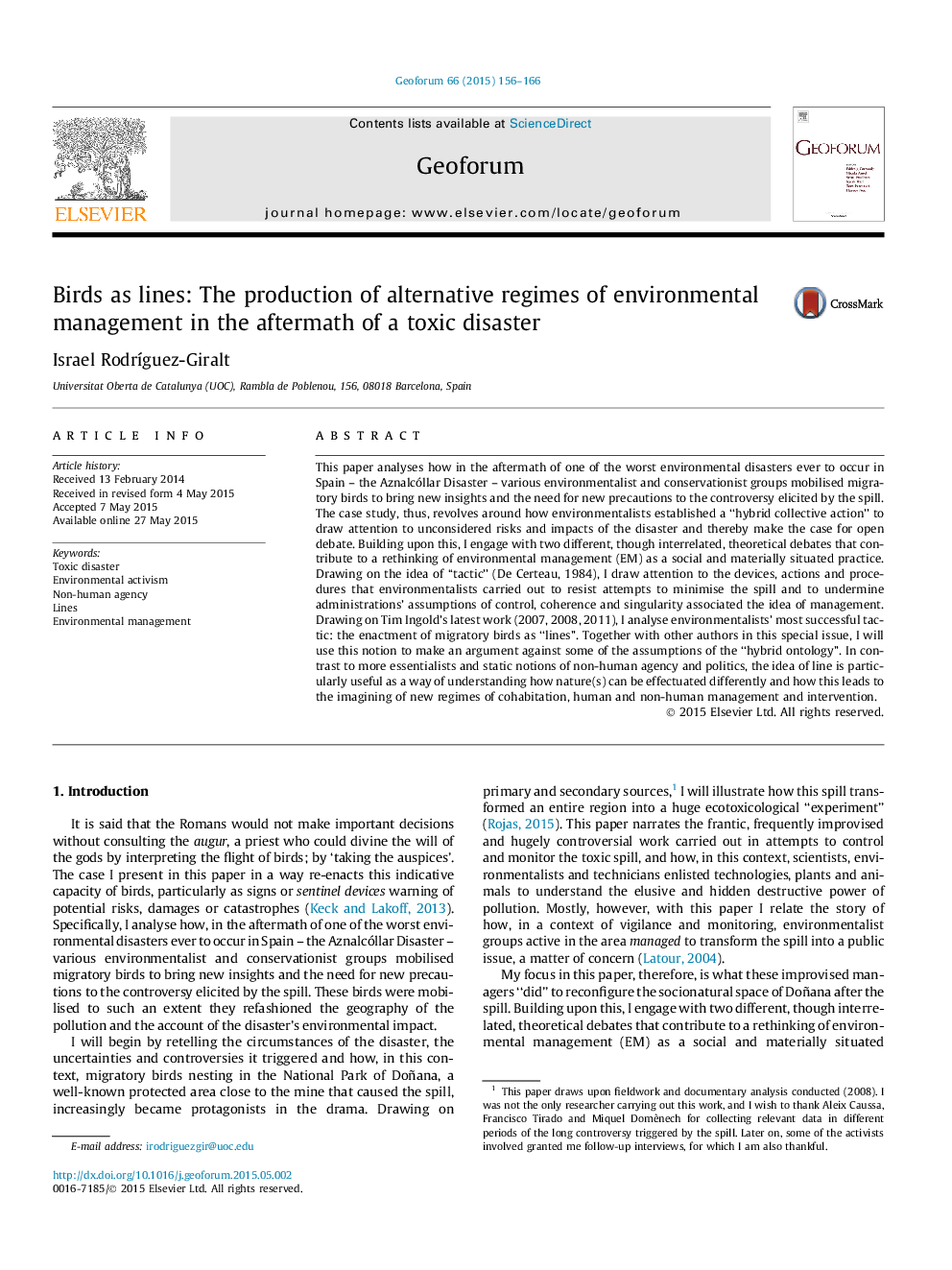| Article ID | Journal | Published Year | Pages | File Type |
|---|---|---|---|---|
| 5073606 | Geoforum | 2015 | 11 Pages |
â¢I examine a disaster as a multiple, fragmented and non-coherent situated practice of environmental management.â¢I use the notions of tactic to focus on the more temporary, incoherent and makeshift dimensions of EM.â¢The notion of line speaks of how nature(s) can be effectuated more vibrantly.â¢I analyse how birds-as-lines lead to new regimes of human and non-human management.â¢Tactics and lines challenge traditional assumptions of control, coherence and singularity associated to EM.
This paper analyses how in the aftermath of one of the worst environmental disasters ever to occur in Spain - the Aznalcóllar Disaster - various environmentalist and conservationist groups mobilised migratory birds to bring new insights and the need for new precautions to the controversy elicited by the spill. The case study, thus, revolves around how environmentalists established a “hybrid collective action” to draw attention to unconsidered risks and impacts of the disaster and thereby make the case for open debate. Building upon this, I engage with two different, though interrelated, theoretical debates that contribute to a rethinking of environmental management (EM) as a social and materially situated practice. Drawing on the idea of “tactic” (De Certeau, 1984), I draw attention to the devices, actions and procedures that environmentalists carried out to resist attempts to minimise the spill and to undermine administrations' assumptions of control, coherence and singularity associated the idea of management. Drawing on Tim Ingold's latest work (2007, 2008, 2011), I analyse environmentalists' most successful tactic: the enactment of migratory birds as “lines”. Together with other authors in this special issue, I will use this notion to make an argument against some of the assumptions of the “hybrid ontology”. In contrast to more essentialists and static notions of non-human agency and politics, the idea of line is particularly useful as a way of understanding how nature(s) can be effectuated differently and how this leads to the imagining of new regimes of cohabitation, human and non-human management and intervention.
